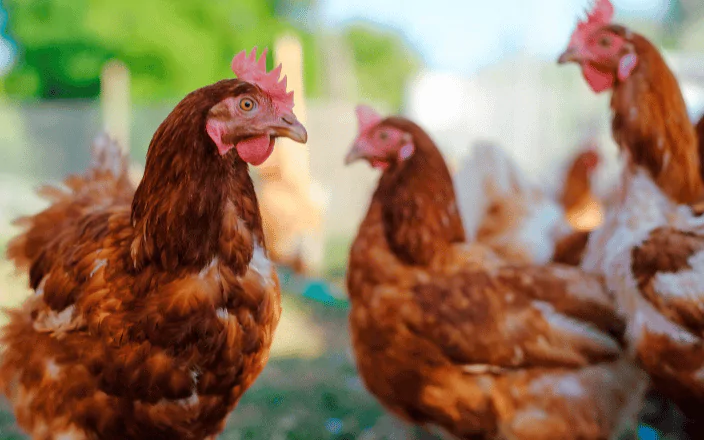Africa’s poultry industry is a cornerstone of food security, providing affordable protein to millions. Yet in 2025, rising feed costs are squeezing farmers’ profits, threatening livelihoods, and pushing prices higher for consumers. With maize and soya shortages driving feed prices up by 20–30% across East and West Africa, the challenge has never been greater. But new government subsidies — such as Nigeria’s 25% feed cost reduction in Lagos — are helping farmers stay afloat.
This feature explores what’s driving the spike in feed prices, how subsidies are reshaping the sector, and what the future holds for Africa’s poultry producers.
Why Feed Costs Are Skyrocketing in 2025
Feed accounts for up to 70% of poultry production costs, making it the biggest expense for farmers. Maize and soya — the main ingredients — are in short supply this year due to erratic weather, global trade disruptions, and heavy reliance on imports.
In East and West Africa, feed costs have surged by up to 30%, cutting deeply into farmers’ margins. The ripple effect is clear: higher feed costs translate into more expensive eggs and chicken, squeezing both rural and urban consumers.
Nigeria, Africa’s largest poultry producer with 24.9% of the continental market, is among the hardest hit. Meanwhile, Africa’s $14.5 billion poultry feed market continues to expand at a 3.8% CAGR, underscoring the strong demand — and the urgent need for cost containment.
Subsidies: A Lifeline for Poultry Farmers
Governments are stepping in to cushion the blow. In Lagos, Nigeria, a 25% feed subsidy introduced in January 2025 has helped farmers stabilize production and reduce consumer price hikes.
In Ghana, the ambitious Nkoko Nkitinkiti initiative — which includes distributing three million chicks and subsidized feed — aims for 100% poultry self-sufficiency within three years. The program combines feed cost relief with better production practices, empowering farmers to optimize protein levels for higher egg and meat yields.
These policies also align with the African Continental Free Trade Area (AfCFTA) strategy, which promotes local sourcing of feed ingredients to reduce dependency on expensive imports.
Challenges Beyond Feed Costs
While subsidies help, they are not a cure-all. Many farmers still face limited access to quality maize and soya, inadequate storage, and transport bottlenecks that force them to buy feed at inflated peak-season prices.
Competition from cheap poultry imports — especially from Argentina and the United States — continues to undermine local producers. Farmers in South Africa and Ghana have called for tougher anti-dumping measures to protect domestic markets.
Additionally, bureaucratic delays and uneven distribution of subsidy benefits mean that many smallholders are left out. Rural infrastructure gaps make it difficult to deliver subsidized feed where it’s needed most.
Innovation: The New Frontier in Feed Management
To offset high feed costs, farmers and innovators are turning to new solutions:
-
Optimized Feed Formulations: Mobile apps in Ghana and Uganda now help farmers balance feed nutrients for better productivity and reduced waste.
-
Local Feed Production: AfCFTA-backed initiatives promote local maize and soya cultivation, while Nigeria’s BirdPreneur program trains 5,000 farmers on homegrown feed sourcing.
-
Alternative Feed Sources: The use of black soldier fly larvae as a sustainable protein alternative is gaining traction in Kenya, Rwanda, and Uganda.
-
Integrated Farming Systems: Poultry-fish-vegetable combinations are emerging as cost-efficient circular models, recycling nutrients and cutting input costs.
These approaches empower smallholders to build resilience and reduce dependence on fluctuating grain markets.
The Bigger Picture: From Subsidies to Self-Sufficiency
Feed subsidies are becoming part of Africa’s long-term poultry self-sufficiency agenda. Ghana’s Nkoko Nkitinkiti program seeks to eliminate a $300 million annual poultry import bill, while Zimbabwe’s Rural Development 8.0 program supports rural farmers with indigenous breeds and feed relief.
With urban populations growing at 4.5% annually, demand for affordable protein is surging. Poultry remains the most accessible meat source — and with the right policy mix, Africa could eventually rival global poultry powerhouses like Brazil.
What’s Next for African Poultry?
Feed costs are unlikely to stabilize soon, but the momentum around subsidies and innovation offers hope. Governments must continue improving subsidy access, strengthen local feed supply chains, and invest in climate-resilient agriculture to mitigate risks like La Niña-related droughts.
Upcoming events such as VIV MEA 2025 in Morocco will spotlight these solutions, providing a platform for collaboration between farmers, policymakers, and innovators.
Conclusion: A Sustainable Path Forward
Africa’s poultry sector stands at a crossroads. Soaring feed costs threaten to slow its growth, but well-designed subsidies, innovation, and local feed initiatives can ensure long-term resilience.
For farmers, adopting technology and sustainable feed solutions will be key. For consumers, these measures promise stability in egg and chicken prices — and continued access to affordable protein.
If Africa can align policy, innovation, and production efficiency, the continent’s poultry industry could not only survive the feed crisis but emerge stronger and globally competitive.



